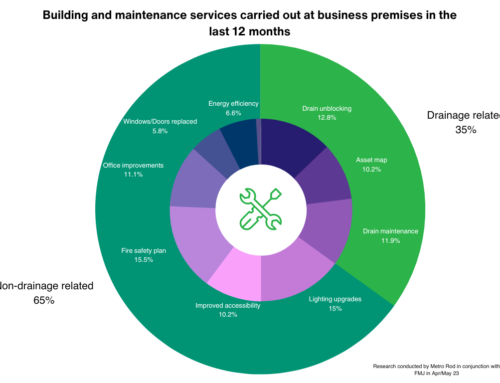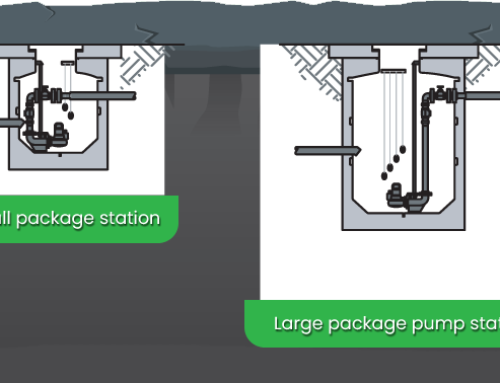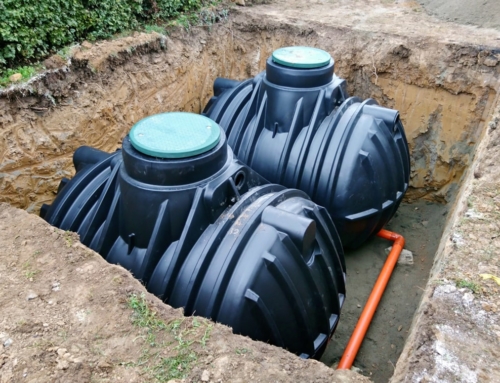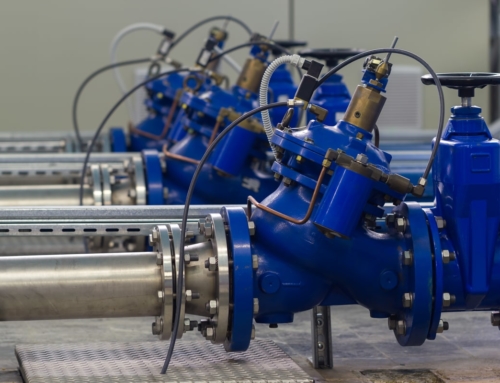Both septic tanks and sewage treatment plants are responsible for processing wastewater for off-mains properties or sites, but there are some key differences between them that are important to understand. The release of treated wastewater into watercourses is covered by legislation for environmental and health protection, so knowing what system is safe and appropriate for your site is crucial.
Read on for a closer look at these systems and how they work.
What is a septic tank?
A septic tank generally consists of two chambers. Wastewater flows into the first chamber where it separates. Solids (sludge) sink to the bottom and oils (scum) stay on the surface. The separated wastewater then passes into the second chamber which has a T-shaped outlet to prevent sludge and scum from exiting the tank. It then passes from there out into a drainage field – the wastewater percolates through the soil where it is treated by naturally occurring bacteria, making it safe to run into a watercourse.
Is your septic tank compliant?
New legislation in 2020 meant that septic tanks that discharge straight into a watercourse are no longer environmentally compliant. Any wastewater leaving a septic tank must flow through a soakaway or drainage field before joining the watercourse.
What is a sewage treatment plant?
Whereas a septic tank has two chambers, a sewage treatment plant generally has three. The wastewater is separated first, as in a septic tank. The separated water is then passed into a second chamber where a pump aerates it, promoting the growth of good bacteria that act to breakdown anything harmful. The treated water is then passed into a third chamber where any remaining sediment settles out, and from there it can be released straight into a watercourse.
What are the key differences?
In summary, although performing the same function – the treating of wastewater or effluent – these are the key differences to be aware of between septic tanks and sewage treatment plants:
- The output from a sewage treatment plant has been ‘treated’ – the harmful bacteria has been broken down, meaning that the output can safely flow directly into a watercourse. The output from a septic tank has been separated, but not treated, meaning that it must flow through a soakaway or drainage field before joining a watercourse. This makes a septic tank unsuitable for some sites, if a drainage area cannot be used.
- A septic tank does not need power to function – it works on natural separation and flow. A sewage treatment plant relies on power to keep the treatment chamber aerated.
- As there are no mechanical or electrical parts, a septic tank does not need servicing. However, it does need to be emptied regularly. A sewage treatment plant requires regular servicing and maintenance as well as emptying.
Which system is best for your site or property?
If your property or site is not connected to mains sewage systems, then you will need either a septic tank or sewage treatment plant. Which you choose depends on the requirements of your site. If there is no suitable drainage or soakaway opportunity, then a septic tank will not be compliant and would not be a suitable choice. The size and accessibility of your site will also have an effect. Contact Willow Pumps today for more advice on your needs.
The legislation states that a septic tank that discharges to a watercourse needs a drainage field before it enters the watercourse, many of our customers have been opting for the installation of the STP as the waste is treated (no drainage field needed).
Willow Pumps are here 24/7 all year round for all your sewage treatment needs, whether that’s regular maintenance, emergency callouts, or simply advice and support. For more information about our services, get in touch with us today.








